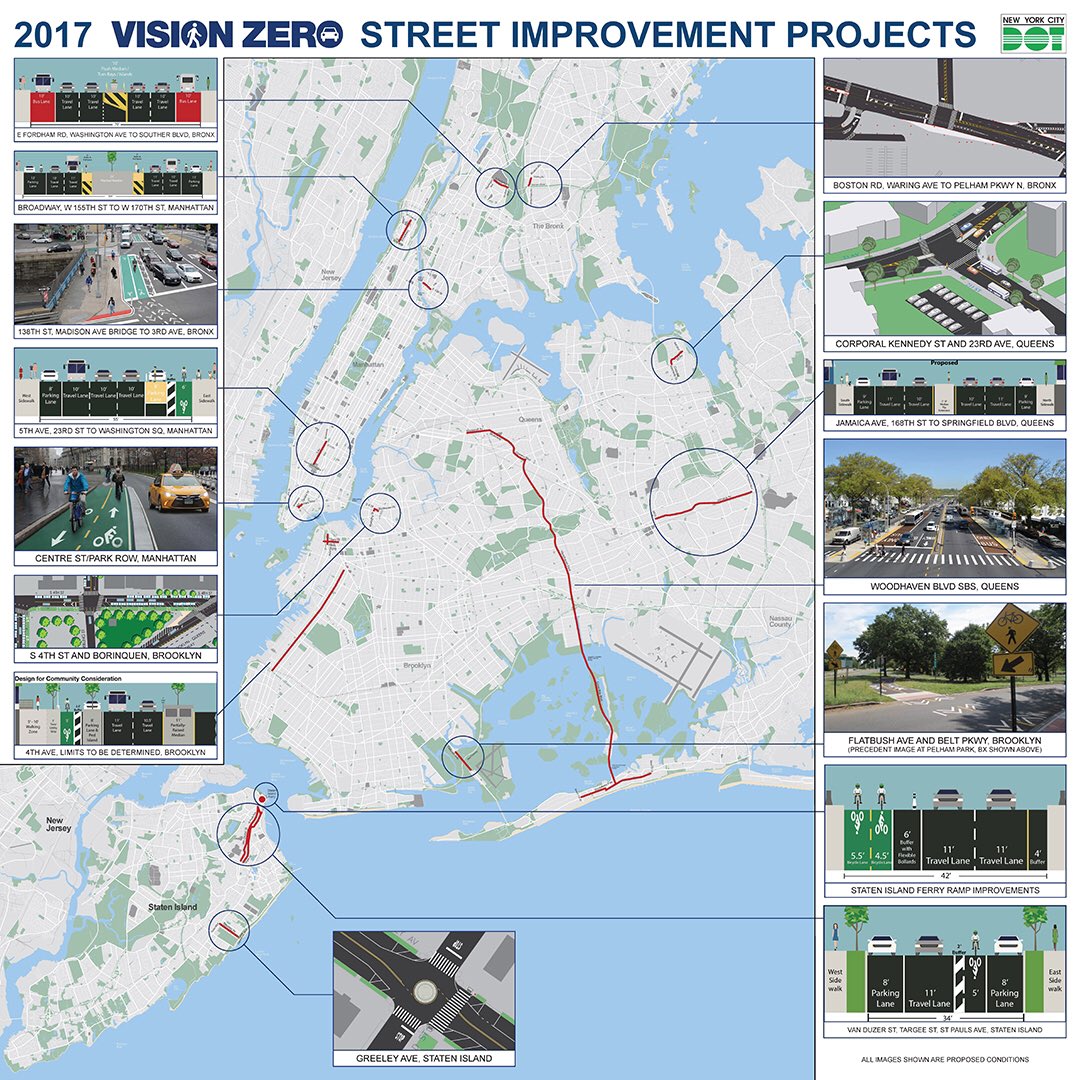To ring in the spring construction season, Mayor de Blasio previewed City Hall's street safety priorities in the year ahead.
Speaking in Downtown Brooklyn this morning, the mayor stood next to a map of major safety projects planned for 2017. The projects (presumably not an exhaustive list for the year), include several street redesigns that have already been publicly revealed -- like Fourth Avenue in Brooklyn, better bike access to the Brooklyn Bridge and Williamsburg Bridge, and Van Duzer Street bike lanes -- as well as a few that have not.
Notably, it looks like the city will continue its Harlem River bridges initiative with a bike connection on 138th Street linking the Madison Avenue Bridge to Third Avenue in the Bronx.
De Blasio noted that to date, the city has relied on $100 million in federal funds for Vision Zero projects, and that the Trump administration's federal budget outline could slow the pace of street redesigns. In particular, the city is counting on $97 million in federal funds to reconstruct Woodhaven Boulevard with safer walking infrastructure and bus priority treatments.
The mayor also said that NYPD continues shift its enforcement practices, with speeding tickets up 17 percent this year compared to 2016, and summonses for failure-to-yield and obstructing a bike lane up 29 and 23 percent, respectively.
Each year that de Blasio has been in office, the number of traffic deaths has fallen, but last year, pedestrian and cyclist deaths increased and total traffic fatalities didn't change much.
The city's speed camera enforcement program has made an impact, but it's still limited to streets that abut a school entrance during school hours.
Transportation Commissioner Polly Trottenberg said that in the past five years, 85 percent of fatalities and injuries happened at times or places where the city is not allowed to operate the cameras under current state law. She's headed to Albany this evening to meet with representatives about expanding the program beyond the current limit of 140 school zones.
"We would like to see some of those restrictions lifted -- have the ability to go to more schools and even potentially the ability to look at high crash corridors instead of just schools," she said.






